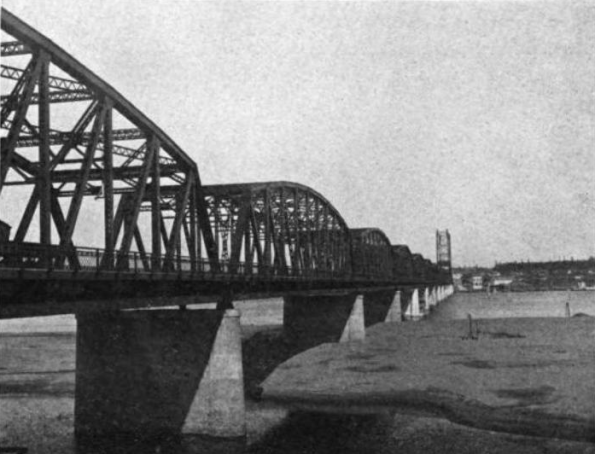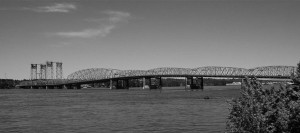Next time you’re stuck on the Interstate 5 bridge in heavy traffic, consider this: Up until 1870, people had to paddle rowboats and canoes across the Columbia River to get to Portland. One man even died crossing the river by foot one chilly winter when he fell through the ice and froze to death.
Maybe that’s not enough to ease traffic woes for the 60,000 Clark County commuters who make the trek across the I-5 bridge each day, but it does speak to a time when traveling from Washington to Oregon was no easy feat.
Just think, when Gen. O.O. Howard’s daughter, Grace, wanted to visit her suitor Robert Gray in 1879, a soldier from Fort Vancouver would have to row her across the river to Portland to visit him. It was an inconvenience for Gen. Howard, too. Before sunset the general, who lost his arm in the Civil War, would take a seat on his front porch to patiently wait and listen for Grace to yell a mighty “yoo hoo” as a signal for her father to send a soldier to fetch her.
The commute across the river got a bit easier in 1870 when regularly scheduled ferry service began. But in 1905, when 2,000 people nearly swamped the ferry on their way from Vancouver to the Lewis and Clark Centennial in Portland, it became apparent that a bridge was desperately needed.
By 1911, Clark County had bridge fever according to “Clark County History 1997,” a book published annually by the Fort Vancouver Historical Society of Clark County.
The Vancouver Chamber of Commerce took the lead in a campaign to stir up support for a new bridge. The bridge would later be built jointly by Clark and Multnomah counties. After 23 months of labor, the Interstate Bridge opened in February 1917. A crowd of between 40,000 and 50,000 welcomed the new addition with a dedication ceremony in the middle of the bridge. Eight-year-old Mary Ellen Kiggins pulled a yellow ribbon to officially open the bridge to traffic, according to an article written by Steven Leader in “Clark County History.”
The Columbian hailed it as “the greatest day in Vancouver history.”
The Columbian’s Bob Beck later wrote, “For the first time, motorists could travel from Canada to Mexico on the Pacific Highway without having to board a ferry. The last river had been bridged.”
In its first year of operation, the Interstate Bridge opened 1,000 times to let boats pass through, leading to long delays for drivers. By 1958, that figure had doubled. That same year a second matching bridge (which is now the southbound span) opened next to the existing bridge. The original Interstate Bridge crossing remained the only link from Vancouver to Portland for 65 years.

